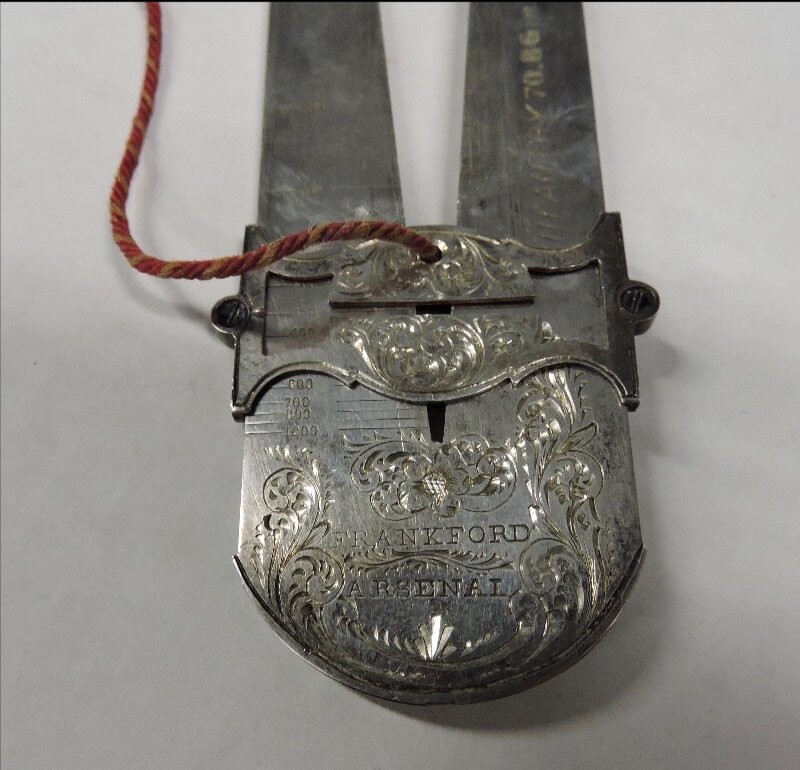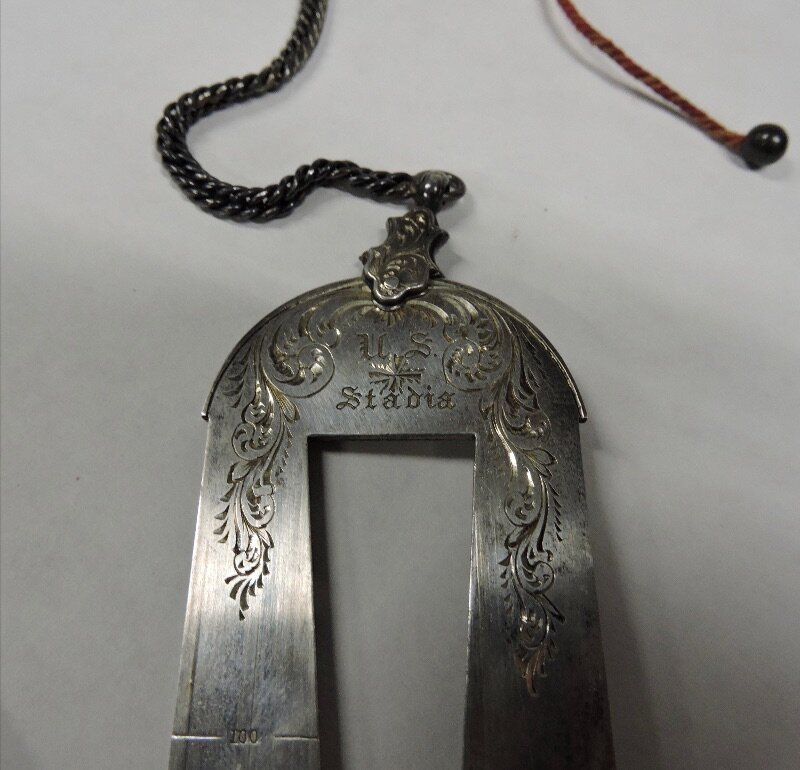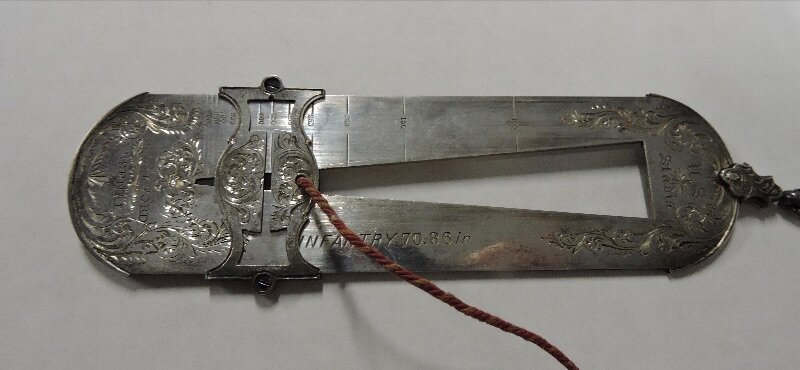Have you ever heard of a stadia? We recently came across one with Virginia history that descended in the family of Robert Thomas Barton of Winchester, Virginia. He was born in Frederick County, Virginia in 1842 and went on to enlist in the Infantry, Company F 2nd Virginia Infantry, in 1861. He was discharged in 1861 due to injury and re-enlisted in 1862 with the Rockbridge Artillery, which was part of the "Stonewall Brigade." He was further injured in 1862 and then worked in the Confederate Nitre and Mining Bureau from 1862-1863. This rare stadia is one of only 340 that were produced from 1858-1880.
So what exactly is a stadia? A stadia is a rangefinder tool used by a marksman to calculate his sights on a target. This particular silver stadia was presented as a U.S. Army regimental prize for the best shot in a regiment, whereas similar brass stadia were presented for the best shot in a company. It is engraved with decorative flourishes and is marked "US/Stadia/Frankford Arsenal" on the front and "Geo. W Simons & Bro/Manfrs Phila" on the reverse. One side was used for calvary measurements while the other for infantry and each side shows a corresponding graduated measurement scale.
As firearm technology advanced in the nineteenth century a new tool, the stadia, was needed to ensure a more accurate rifle shot. A fob - still present on this example - allowed a stadia to be worn and displayed on a uniform while the red thread, with a metal bead at either end, was used when taking a measurement. When using the stadia a marksman would set the correct distance, say 150 yards, by using the central sliding bar until his target completely filled the open gap in the stadia. He would then pull the red string to his dominant eye and tie a knot where it touched, this allowed his measurement to be easily referenced again.
Interested in learning more? Click this link to view the full description of the stadia.
Have you heard of a Stadia?
in Always Learning, News






